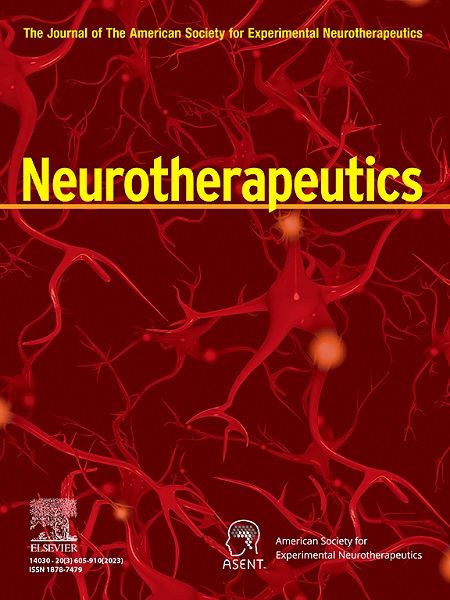Deep brain stimulation improves symptoms across all dimensions in treatment-resistant depression
IF 6.9
2区 医学
Q1 CLINICAL NEUROLOGY
引用次数: 0
Abstract
Deep brain stimulation (DBS) reduces depressive symptom scores in many patients with treatment-resistant depression (TRD). However, it is unclear whether the observed improvement is similar across various symptom dimensions (e.g., anhedonia, anxiety, insomnia) or if some require additional clinical attention. Using a retrospective chart review, we assessed the trajectory of HAM-D-17 and MADRS scores during vALIC or slMFB DBS treatment within different symptom dimensions (HAM-D-17: 1) affective/anhedonia, 2) somatic/anxiety, 3) insomnia; MADRS: 1) affective/anhedonia, 2) anxiety/vegetative, 3) hopelessness) after at least a 25 % symptom reduction (partial response) at any time during their treatment course (n = 34 for HAM-D-17, n = 25 for MADRS). Results showed that each of the assessed symptom dimensions was significantly reduced compared to baseline at each of the assessed time periods (last follow-up: 2–15 years) after (partial) DBS response onset, which occurred at a median of approximately 2.5 months. Additionally, there was a significant interaction effect between symptom dimension and time period (HAM-D-17: F (12,1655.46) = 5.46, p < 0.001; MADRS: F (12,938.73) = 2.40, p < 0.01). Model coefficients indicated that insomnia symptoms (HAM-D-17) and anxiety/vegetative symptoms (MADRS) improved at a slower rate than the other symptom dimensions. Additionally, higher baseline scores in the HAM-D-17 somatic/anxiety dimension were significantly associated with a larger percentage reduction in overall symptoms after DBS (n = 39, F (1,32) = 12.371, p < 0.01). Our findings demonstrate that DBS for TRD effectively treats depressive symptoms in all dimensions, although insomnia symptoms may improve at a slower rate, and that patients with more anxiety symptoms, who typically tend to have worse pharmacological treatment outcomes, may particularly benefit from DBS.
脑深部刺激可以改善难治性抑郁症的各个方面的症状。
脑深部电刺激(DBS)可降低许多难治性抑郁症(TRD)患者的抑郁症状评分。然而,目前尚不清楚观察到的改善是否在不同的症状维度(如快感缺乏、焦虑、失眠)相似,或者是否有一些需要额外的临床关注。通过回顾性图表回顾,我们评估了在vALIC或slMFB DBS治疗期间不同症状维度(HAM-D-17: 1)情感/快乐缺缺性,2)躯体/焦虑,3)失眠和MADRS评分的轨迹;MADRS: 1)情感性/快感缺乏症,2)焦虑/植物性,3)绝望)在治疗过程中任何时间症状减轻至少25%(部分缓解)后(HAM-D-17组n = 34, MADRS组n = 25)。结果显示,在(部分)DBS反应发生后(中位时间约为2.5个月)的每个评估时间段(最后随访:2-15年),与基线相比,每个评估的症状维度都显着降低。此外,症状维度与时间段之间存在显著的交互作用(HAM-D-17: F (12,1655.46) = 5.46, p < 0.001;MADRS: F (12,938.73) = 2.40, p < 0.01)。模型系数表明,失眠症状(HAM-D-17)和焦虑/营养症状(MADRS)的改善速度比其他症状维度慢。此外,HAM-D-17躯体/焦虑维度的基线得分越高,DBS后总体症状减轻的百分比越高(n = 39, F (1,32) = 12.371, p < 0.01)。我们的研究结果表明,DBS治疗TRD在各个方面都能有效地治疗抑郁症状,尽管失眠症状可能以较慢的速度改善,而且通常倾向于药物治疗结果较差的焦虑症状较多的患者可能特别受益于DBS。
本文章由计算机程序翻译,如有差异,请以英文原文为准。
求助全文
约1分钟内获得全文
求助全文
来源期刊

Neurotherapeutics
医学-神经科学
CiteScore
11.00
自引率
3.50%
发文量
154
审稿时长
6-12 weeks
期刊介绍:
Neurotherapeutics® is the journal of the American Society for Experimental Neurotherapeutics (ASENT). Each issue provides critical reviews of an important topic relating to the treatment of neurological disorders written by international authorities.
The Journal also publishes original research articles in translational neuroscience including descriptions of cutting edge therapies that cross disciplinary lines and represent important contributions to neurotherapeutics for medical practitioners and other researchers in the field.
Neurotherapeutics ® delivers a multidisciplinary perspective on the frontiers of translational neuroscience, provides perspectives on current research and practice, and covers social and ethical as well as scientific issues.
 求助内容:
求助内容: 应助结果提醒方式:
应助结果提醒方式:


